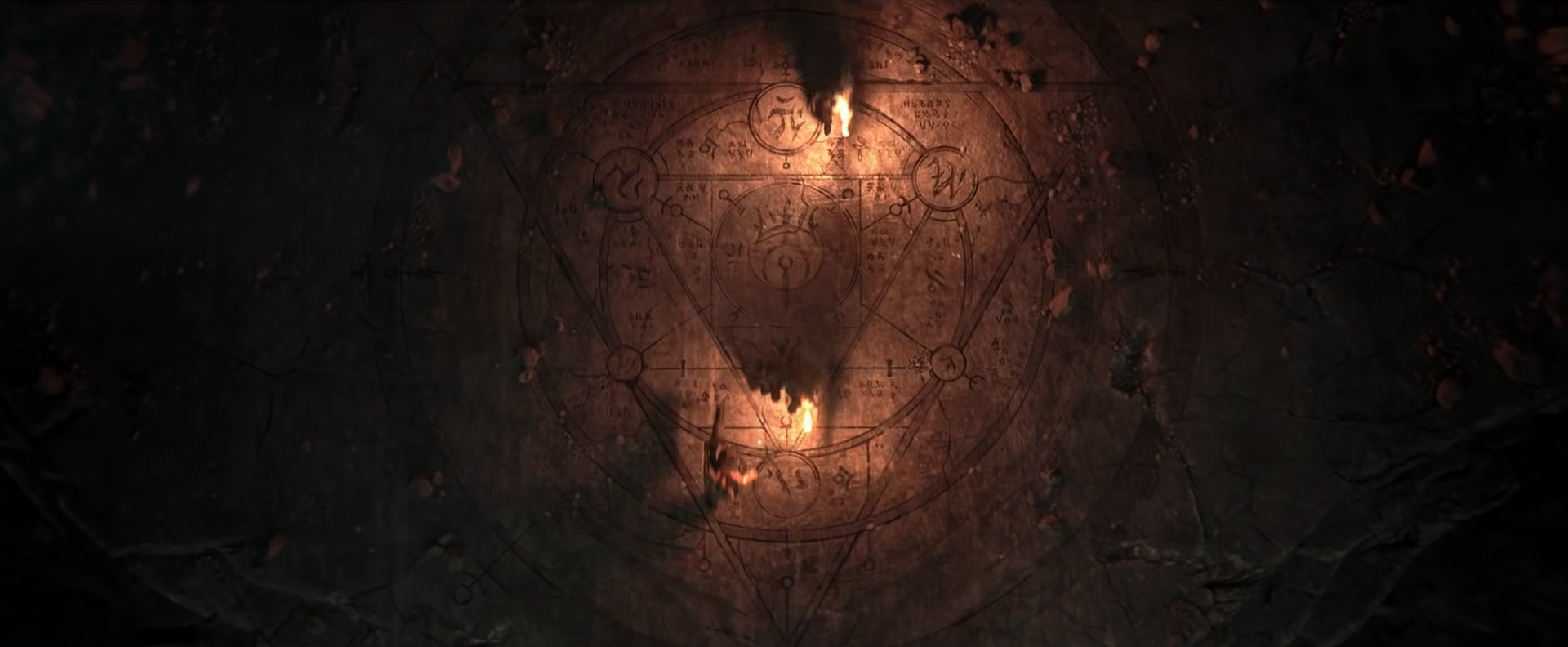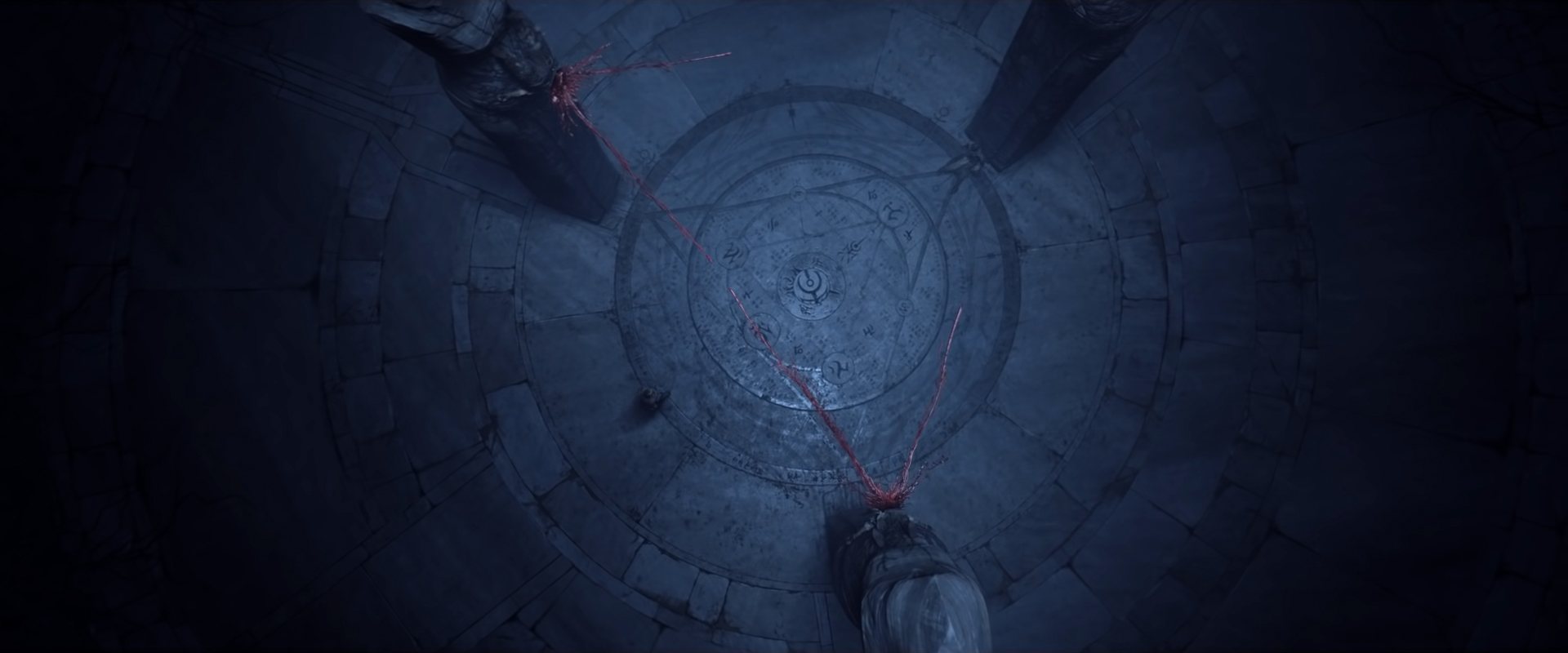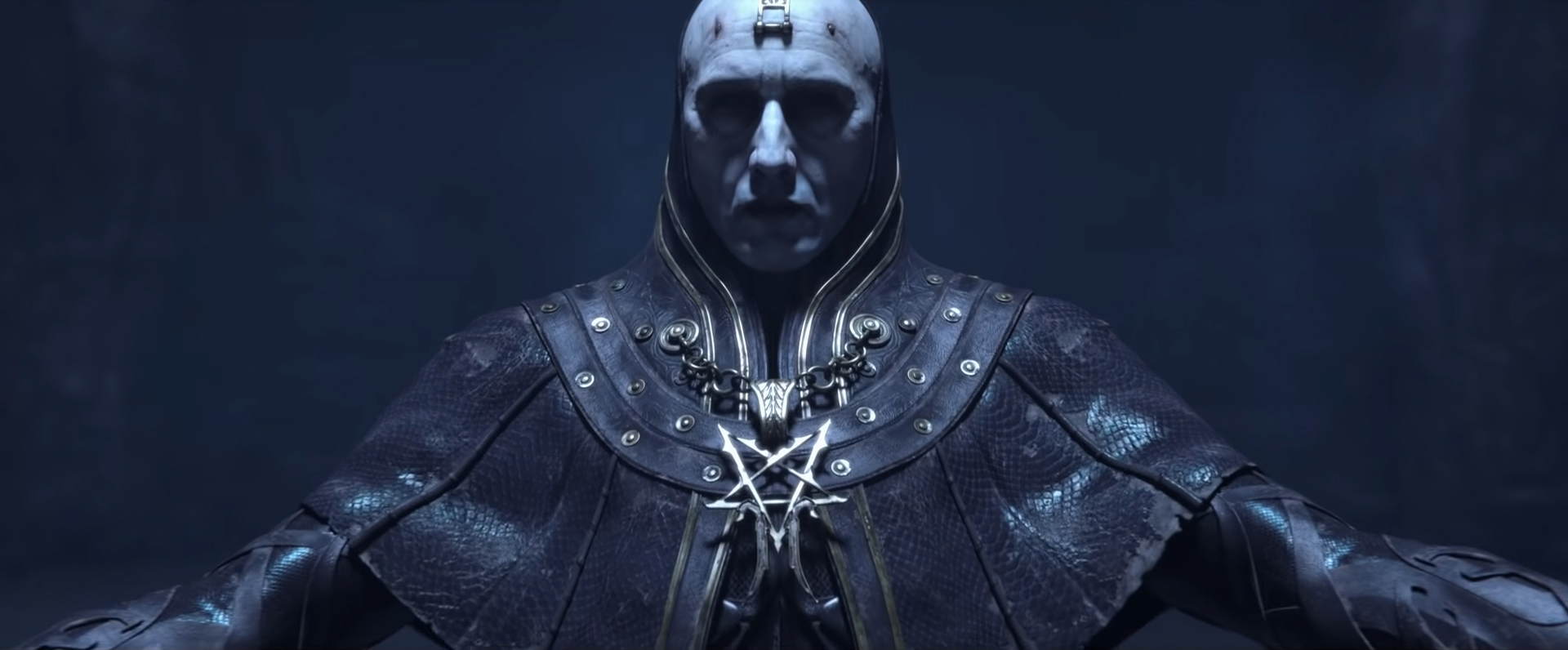The Diablo 4 cinematic trailer's lore and biblical references explained
"We call thee home."
Diablo 4 will be Lilith's full-fledged debut. While she has been mentioned many times throughout Diablo 2, she was only seen briefly during the game's Pandemonium event. Her dramatic entrance in the new cinematic—or birth, I should say—from a floating blood pool that stretches into a cape foreshadows just how pivotal a role she'll play in Diablo 4.
During the announcement, the developers promised a return to the darkness of Diablo 2, and more occultism. Much more occultism. It feels like they can make good on that promise in the story, even if the demo at BlizzCon reminded us that Diablo 4 is still a game primarily about clicking and finding loot. Lilith has a millennia-long history in religion and religious folklore, so there's plenty of nasty demonology to draw from. Based on the cinematic trailer and its symbolism, here are some educated guesses about the depths Diablo 4 could descend into.

For starters, the number three is predominant in the Diablo 4 trailer. We see it symbolically as a large carving that a few treasure hunters stumble across with their torches. We see it again as the three treasure hunters are hung upside down and drained of all their blood to release Lilith from her prison. The number three has many meanings across many different religions and folklores, but traditionally it's an indicator of balance and harmony, or a reconciliation of conflict between two extremes.
In Diablo lore, Lilith grows tired of the Eternal Conflict: the war between the High Heavens and the Burning Hells. She and an angel, Inarius, who was also her lover, create a new world called Sanctuary, thereby forming a 'triangle' between the three worlds. But Lilith didn't do it to bring balance and harmony. She did it to escape, at least initially, but later came to see Sanctuary as the solution to ending the Eternal Conflict.
She couldn't do that without an army of sorts, so in their new world, Lilith births Inarius' children, called the Nephalem, who were half angel and half demon. Eventually, those children bore children who began to fear that Heaven and Hell would find out about Sanctuary. So, they wanted to destroy their world. Lilith wasn't exactly thrilled with this idea, so she murdered every one of her rebellious children and grandchildren. Inarius, not exactly pleased with that, banished her to the Void, an empty realm of endless darkness.

In the Diablo 4 trailer, Lilith is brought back from the Void, and she looks just as pissed off as the day she was banished there. Much of her fictional backstory in Diablo is from Jewish mythology and folklore (although the same passages in the Hebrew Bible about her also appear in the many versions of the Christian Old Testament). There are many parallels between the Diablo Lilith and the mythological Lilith.
In Jewish mythology, it's been said that Lilith was Adam's first wife. Vampire lore (or Greco-Roman mythology) also considers her the starting point for vampirism—hence why bringing Lilith back from her prison in Diablo 4 would require a blood sacrifice. Opening the door to the inner sanctum in the cinematic also requires a blood sacrifice. Blood, whether we're talking about vampirism or not, is ritualistically and literally a life force; Catholics consider the sacramental wine the blood of Christ, for example. "By three they come, by three the way opens" one of the characters says in the Diablo 4 cinematic. "Blood is the key."
The biggest gaming news, reviews and hardware deals
Keep up to date with the most important stories and the best deals, as picked by the PC Gamer team.
Lilith is also called "lamia" in the Latin Vulgate Book of Isaiah 34:14, a late 4th century translation of the Bible that became the Catholic Church's official Latin version of the Bible by the 16th century. Lamia, in ancient Greek mythology, was a woman who became a child eater after Hera killed her children who were fathered by Zeus. Lamia has also come to mean 'vampire' in other cultures. A Catholic Bible that was once my grandmother's (published by The Catholic Press, Inc. in 1950), uses the term lamia in the same passage, to my surprise. It says, "And demons and monster shall meet, and the hairy ones shall cry out to one another, there hath the lamia lain down, and found rest for herself." So blood, vampires, lamia, Lilith—they're all one in the same.

But blood and the number three are just small parts of the mythology that seems to have inspired Diablo's Lilith, which is laid out in the Book of Isaiah 34:14 and the rest of Jewish folklore. Sanctuary is a reference to the Red Sea, where Lilith went after leaving Adam in the Garden of Eden. God sent the angels Senoy, Sansenoy, and Semangelof to bring Lilith back, and it also takes a sacrifice of three to bring her back in Diablo. But Lilith didn't want to leave the Red Sea, not just because she wasn't happy with Adam not treating her as his equal, but also because she somehow managed to birth hundreds of demon children. She didn't procreate with a fallen angel like Inarius, but she populated this area with her offspring nevertheless.
The three angels weren't happy about that, but still gave her a chance to come back to the Garden of Eden. She refused, but struck a deal with the angels: she would spare any human infant she came across that bore one the three angels' symbols. The angels were OK with this, but God still ordered that 100 of her demon children would die everyday. Lilith, understandably upset, would sometimes kill her own offspring if she could not kill a human child.
Going back to the Nephalem from Diablo lore, the name is close to the Bible's Nephilim, which has been interpreted as the "sons of God" and the "daughters of men," or as giants, or as fallen angeles, depending on which Bible verse you reference or if you are looking at Jewish or Christian mythology. Nephalem and Nephilim are references to the same kind of mythological creature.
In Diablo lore, Inarius caused the powers of the Nephalem to diminish overtime, which eventually led to the creation of mortals, humanity. In religious mythology, something happens to cause Nephilim to either go extinct or evolve into mortals after generations. In the story of Noah's Ark, the great flood that God brings upon the world is sometimes interpreted as God's mission to destroy the Nephilimm.

Lilith, and every bit of lore that comes with her, is about as occultly as it gets for religious mythology, and perfect material to expand on in Diablo 4, if its mission is to steep us in biblical horrors. Lilith is clearly back from the Void with a vengeance.
My main question right now is who's behind the cult (I'm assuming it's a cult) that wants to bring her back, and why. It doesn't seem like the Eternal Conflict ever ended, and now that Lilith is back she's probably got more on her mind than trying to end it—like, say, finding Inarius and unleashing her demon spawn on the world as revenge. Maybe her causing more chaos in Sanctuary will unite Heaven and Hell in a common cause after all.


